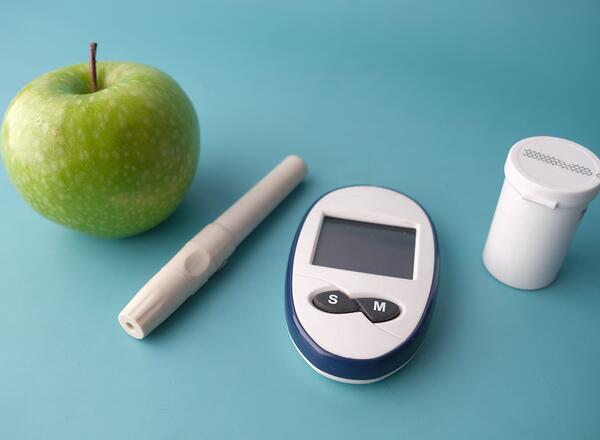
Carbohydrate-containing foods affect blood glucose levels the most. Fruit, starches, starchy vegetables, milk/yogurt groups are all carbohydrate-containing foods. A fast-acting carbohydrate food like orange juice will affect blood glucose more quickly than whole milk which contains carbohydrate, protein, and fat. The fat in the whole milk will take longer to be digested. The sugar takes longer to reach the bloodstream because the fat slows the digestive process.
Since carbohydrates raise blood glucose it is important to see a dietitian or certified diabetes educator help you plan an appropriate amount of carbohydrate for meals and snacks.
Eating consistent amounts of carbohydrate at meal and snack time and eating regularly scheduled meals to help keep blood glucose stable and controlled.
Portion size effects how much carbohydrate a food contains. A carbohydrate choice or serving is the amount of food that provides 15 grams of carbohydrate. Generally, most people with diabetes need between 3 to 5 carbohydrate choices per meal (45-75 grams carb) and possibly 1 or 2 carbohydrate choices (15-30 carb choices) for a snack between meals and sometimes at bed-time. Snacks are not always a necessary part of a diabetes meal plan. Sometimes snacks can just be a source of unwanted calories.
Remember, there is no one “diabetes diet” that is appropriate for everyone. The main objective for diabetes meal planning is to lower carbohydrate intake enough to keep blood glucose within target ranges. This may look different from person to person, but meals and snacks should include lean protein, healthy fats, lower-fat dairy, starches, and fruits and vegetables within carbohydrate allowance.
Work with your health care provider to set blood glucose target ranges, determine an appropriate monitoring schedule and develop a diabetes meal plan that fits your needs and lifestyle.
Blood glucose monitoring is a familiar day in and day out the task for individuals with diabetes. This is just one of the Self-Care Behaviors recommended by the American Association of Diabetes Educators. Blood glucose monitoring provides immediate feedback that can be used to make changes in your diabetes management plan. It is not surprising that the demands of diabetes management can lead to what has been called “diabetes burnout.” Sometimes it is easier to handle the demands of managing your diabetes if you understand the importance and reason for specific monitoring.